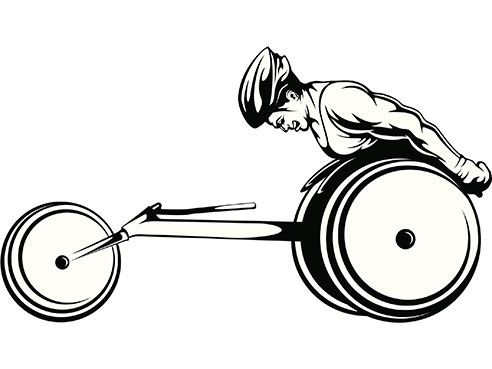 The University of Alabama at Birmingham and the Lakeshore Foundation are partnering with InvoTek, Inc., to create a gear and braking device that helps people with disabilities who have limited or no use of their hands operate a handcycle safely.
The University of Alabama at Birmingham and the Lakeshore Foundation are partnering with InvoTek, Inc., to create a gear and braking device that helps people with disabilities who have limited or no use of their hands operate a handcycle safely.
InvoTek, a research and development company in Alma, Arkansas, has received a $175,000 Phase I Small Business Innovation Research grant from the National Institutes of Health. The grant will fund the development of technology called a Quad Rider to enable people with high-level spinal cord injury the opportunity to enjoy the health benefits of handcycling.
“Lack of access to recreation equipment is one of the primary barriers to participating in health-enhancing fitness activities for people with spinal cord injury,” said James Rimmer, Ph.D., the director of the UAB/Lakeshore Research Collaborative. “The Quad Rider can open up the possibility of promoting a wonderfully engaging form of physical activity for people with high-level tetraplegia and help lower their risk of heart disease and diabetes while improving their mental well-being.”
| “The mechanism does not require strength to brake quickly, which is a big deal for someone who has limited control of his or her hands. Plus, riders can change gears by puffing air into a device through a straw attached to their helmets, allowing them to keep their hands in position to steer and brake.” |
The Quad Rider makes it easy to shift gears and brake, enabling people with poor grip-control to safely cycle.
“The mechanism does not require strength to brake quickly, which is a big deal for someone who has limited control of his or her hands,” said InvoTek president Tom Jakobs. “Plus, riders can change gears by puffing air into a device through a straw attached to their helmets, allowing them to keep their hands in position to steer and brake.”
The Quad Rider will attach onto a standard handcycle. Phase II will focus on enhanced automation of the device for people unable to use a handcycle because of limitations with hand function/dexterity.